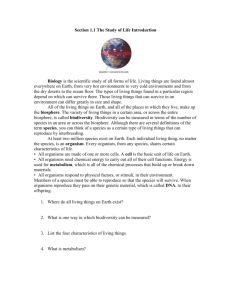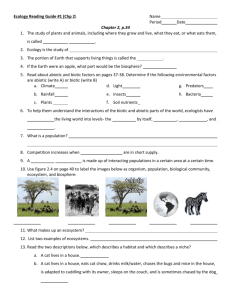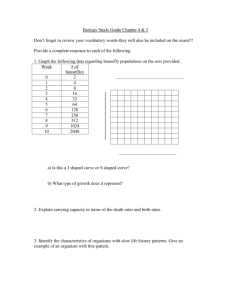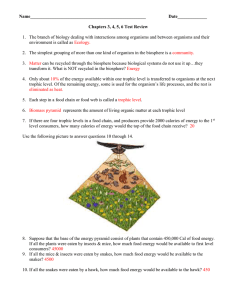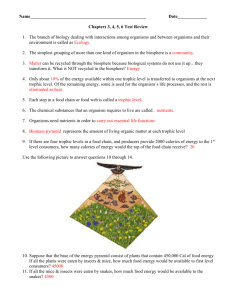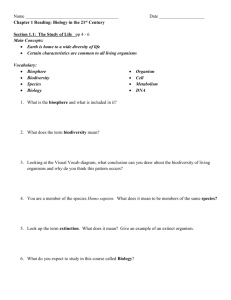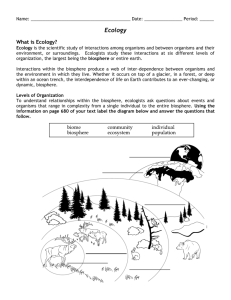Nucleic Acids, Transcription and Translation
advertisement
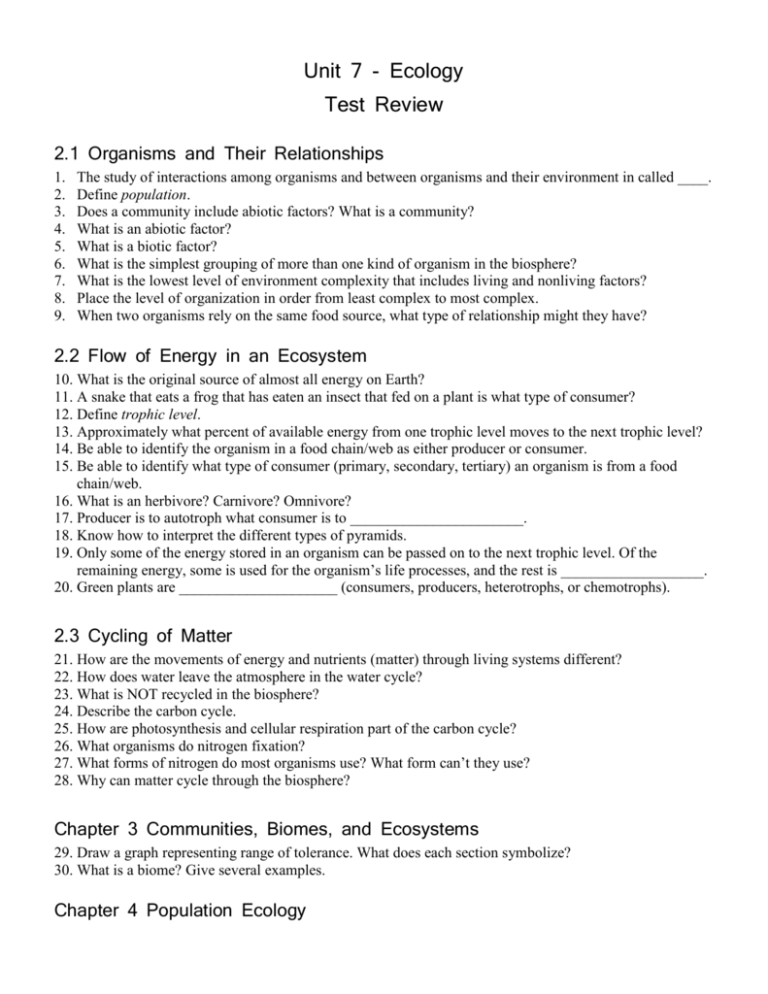
Unit 7 - Ecology Test Review 2.1 Organisms and Their Relationships 1. 2. 3. 4. 5. 6. 7. 8. 9. The study of interactions among organisms and between organisms and their environment in called ____. Define population. Does a community include abiotic factors? What is a community? What is an abiotic factor? What is a biotic factor? What is the simplest grouping of more than one kind of organism in the biosphere? What is the lowest level of environment complexity that includes living and nonliving factors? Place the level of organization in order from least complex to most complex. When two organisms rely on the same food source, what type of relationship might they have? 2.2 Flow of Energy in an Ecosystem 10. What is the original source of almost all energy on Earth? 11. A snake that eats a frog that has eaten an insect that fed on a plant is what type of consumer? 12. Define trophic level. 13. Approximately what percent of available energy from one trophic level moves to the next trophic level? 14. Be able to identify the organism in a food chain/web as either producer or consumer. 15. Be able to identify what type of consumer (primary, secondary, tertiary) an organism is from a food chain/web. 16. What is an herbivore? Carnivore? Omnivore? 17. Producer is to autotroph what consumer is to _______________________. 18. Know how to interpret the different types of pyramids. 19. Only some of the energy stored in an organism can be passed on to the next trophic level. Of the remaining energy, some is used for the organism’s life processes, and the rest is ___________________. 20. Green plants are _____________________ (consumers, producers, heterotrophs, or chemotrophs). 2.3 Cycling of Matter 21. How are the movements of energy and nutrients (matter) through living systems different? 22. How does water leave the atmosphere in the water cycle? 23. What is NOT recycled in the biosphere? 24. Describe the carbon cycle. 25. How are photosynthesis and cellular respiration part of the carbon cycle? 26. What organisms do nitrogen fixation? 27. What forms of nitrogen do most organisms use? What form can’t they use? 28. Why can matter cycle through the biosphere? Chapter 3 Communities, Biomes, and Ecosystems 29. Draw a graph representing range of tolerance. What does each section symbolize? 30. What is a biome? Give several examples. Chapter 4 Population Ecology 31. What is logistic growth? 32. What is exponential growth? Does exponential growth stop at carrying capacity? 33. What kind of graph represents logistic growth? Exponential growth? 34. Know the difference between survivorship curves type I, II, and III. List some examples of organisms that you would expect to be in each type of curve. 35. What is carrying capacity? 36. What are the 3 types of population dispersion? 37. What is population density and how would you calculate this figure? 38. A small farming community in Texas covers 14 square kilometers. There are 420 individuals who live within the town limits. What is the population density of this community? 39. On ten square acres of native forest that are 8 white-tailed deer, 7 coyotes, 45 armadillos, and 231 loblolly pine trees. Which population has the highest density? 40. What is a limiting factor? List examples. 41. What is a density-dependent limiting factor? List examples. 42. What is a density-independent limiting factor? List examples. 43. If organisms produce hundreds of young several times a year, what type of reproductive strategy do they exhibit? 44. When do human populations experience zero population growth? 45. What historical events played a role in the population growth of the 20th century? 46. How has Earth’s carrying capacity changed in the last few centuries? Chapter 5 Biodiversity and Conservation 47. What is biodiversity? 48. What are some factors that threaten biodiversity? 49. What is a nonrenewable resource? List some examples. 50. What is a renewable resource? List some examples, 51. What are 3 types of biodiversity? Group Test Material 52. You will be asked to construct and analyze a food web. 53. You will be asked to construct a graph and analyze population growth for a particular population. GOOD LUCK!!!!!

